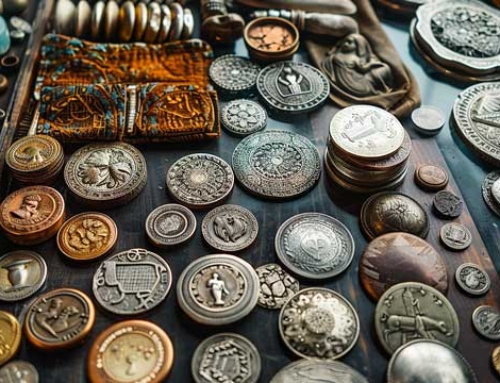Diamonds evoke eternity and curse, power and destruction, invincibility and death. In short, diamonds reflect all the human passions. So I have chosen here to share some legends with you. Do not look for other truths than those you want to believe in.
Some legends look at the divine origin of diamonds
For now, let’s dream about the celestial filiation and the divine origin of diamonds.
In the days of the Pharaohs, diamonds were revered by the Egyptians who placed them in the center of the Ankh sign, the hieroglyph that means “life“. It was therefore placed in the middle of the ankh cross and symbolized the sun, synonymous with strength, courage and truth.
The ancient Greeks had legends through which they believed that diamonds were stardust that fell to Earth or the tears of the gods, i.e. precious celestial particles. There is even a myth that explains that it was Chronos who changed a young man called Diamond into a precious stone.
And for the Romans, the diamond, indestructible, was located at the tip of the arrows that Cupid, the god of love, sent to hit his targets with an indestructible feeling.
From thought to word, the language was structured around the Greek and Latin appellations to form the word diamond.
The word “adamas” (Ἀδάμας) comes from the ancient Greek meaning indomitable, unyielding, unshakeable. Even today the word “adamant” is equivalent to “steadfast” and we speak of an “adamantine” will to signify an unshakeable character. But the adjective adamantine still means “that has the brilliance of a diamond“!
Coming from the Greek, “adamant” designated the hardest metals with which the gods forged their weapons and equipment and of which only they had the secret of manufacture: the helmet of Hercules, the scythe of Saturn, the plough of Aeetes or the chains of Prometheus were thus reputedly made of adamant.
In low Latin, “diamas” also designates the hardest metals, but the notion of magnet in the sense of attraction is added, as for example to designate magnetite.
Indian legends: the Vajra diamond
In India, because we must not forget that diamonds come from India and that as early as the 4th century BC, Sanskrit texts indicate the diamond trade and even the taxes levied on their exploitation by the first emperor of India
In India, according to it’s legends, it was the God Indra who entrusted his weapon, which was lightning, to the first ascetic Dadhichi. When the ascetic gets tired of his job as guardian, he magically dissolves the lightning and swallows it. Obviously it is at this moment that Indra is threatened so he makes a weapon with the spine of the ascetic at the request of the latter. The God wins his fight and is thus in possession of a formidable weapon which has become doubly magical since it combines the force of lightning and a new invincibility. The Sanskrit word is “vajra” ((वज्र)) and will designate the diamond. Indeed this gemstone is shaped like an octahedron and a perfect harmony: 6 sharp points, 8 flat facets and 12 straight and sharp edges. Today, “vajras” are also used to designate the small scepters ritually used in prayer, with a central ball and ends that are graphically similar to the octahedron shape of the diamond, and sometimes with sculptures reminiscent of lightning.
This perceived divine origin of the diamond could only be accompanied by powers. As it was unanimously recognized at the time that diamonds could not be cut but could cut other stones – it was known that as early as the 1st century, the Chinese used diamonds to cut jade – they attributed to it a hardness that was confused with inalterability. From this emotional charge one lends it virtues of invincibility and protection.
In India, the belief was that “he who wears a diamond will see the dangers turn away“, it is with this magical argument that the Indian merchants presented and sold their diamonds within the Roman Empire.
Diamonds are royal
So very quickly the diamond becomes the exclusive privilege of the most powerful. In India, the most beautiful stones are reserved for the elite and are therefore forbidden to be exported. This is why the fact that Jean-Baptiste Tavernier was able to bring them to the court of Louis XIV is an extraordinary feat, even beyond the difficult travel conditions of the time. And this also explains why he was able to bring back the famous blue diamond: it was blue! So it was considered less magical, even evil in the eyes of the Maharajah.
The magical qualities of power make that the use of it becomes forbidden to those which are not themselves invested of the divine power i.e. of royal blood and it will be true until the XVth century. In 1270 the ordinances of King Saint Louis forbid even women, princesses or commoners to wear precious stones and therefore diamonds.
The legend says that it is Agnes Sorel, the mistress of Charles VII who will be the first woman to wear a diamond in 1444.
In the Middle Ages, diamonds were rubbed to polish their natural slopes, but the first cuttings began at that time and only became a technique towards the end of the 16th century.
In short, until the 15th century in the West, the wearing of diamonds was reserved for men of royal lineage who sometimes wore them on their armor as a testimony of their wealth and power. The symbol of power and strength is therefore intimately linked to warrior power and it is perhaps this deep-rooted belief that led Napoleon Bonaparte to have the Regent set on his parade sword in 1803, his coronation sword in 1804, then the pommel of the imperial sword in 1812.
Diamonds, fabulous stones for fabulous legends
As far as love is concerned, it was believed as early as the 8th century B.C. that diamonds strengthened the love between spouses while keeping discord at bay. The ancient Egyptians, then the Greeks and Romans believed in the existence of a vein that started from the ring finger and went directly to the heart, the “vena amoris“, the vein of love. And in 1477 the Archduke Maximilian of Austria gave a diamond ring to Princess Mary of Burgundy for her engagement.
The sum of all this created our tradition of the diamond engagement ring. Giving the diamond a symbol that it did not have originally.
And then jumbled up we believe that this fabulous stone is adorned with all sorts of qualities.
Pliny the Elder, in the first century BC speaks of the diamond as a “rare joy of invincible opulence and refractory to all violence which breaks under the action of the blood of goat“. The goat, symbol of evil, baseness and demonic forces, is of course opposed to the purity and goodness of the diamond.
In the Middle Ages, Marbode wrote in his Lapidary: “Diamonds come from India and Arabia. Those from India are said to be male. Those from Arabia are said to be female. The male diamond is brown, the color of oil. The female diamond is whiter and looks like crystal. No diamond is larger than a small nut. They are very hard: they cut iron, steel and other stones. The diamond is useful to enchanters. The stone gives the man who wears it strength and courage, it protects him from nightmares, ghosts and all kinds of venom. It removes anger and tension, heals those who have lost their minds and serves as a defense against enemies. It keeps man at the point where it finds him for intelligence, fame, value and wealth: if these qualities do not increase, they do not decrease either. It keeps limbs and bones whole: a man may fall from a horse, a wall or a cart, but his bones will remain intact. It will have more virtues if it is given than if it is bought, especially if it is not a legal transaction. The stone also makes night terrors and sexual urges disappear. And whoever wears it will not be condemned lightly, because he will have faith in God Our Lord. The stone keeps the man’s seed in the woman’s body and ensures that the child is born with all its limbs. And know that it is never found on metal as well as on steel. And it must be worn on the left side.”
With such obvious qualities it is made into a medicine. It is applied to the body or ground into powder. The danger will be noticed when Frederick II of Germany in 1250, then the sultan Bajazet in 1512 and the pope Clement VII in 1534 will die of an overdose of crushed diamond.
The black legends of diamonds
Some diamonds would be cursed! Like the famous Hope diamond. Discovered in India in the 17th century by Jean-Baptiste Tavernier, this 45.52 carat blue diamond became part of the French Crown with Louis XIV, Louis XVI and Marie-Antoinette inherited it and were, as we know, beheaded. It was stolen in 1792 during the Revolution. It reappeared in the United States, re-cut, under the name of the British bank that owned it, Hope & Co. After having caused the death of its owners, who were mauled by dogs in Constantinople, the diamond would also have contributed to the madness, suicide or ruin of other owners until it was offered to the National Museum of Natural History in Washington.
Another of the legends, another curse, that of the Black Orlov diamond. In a temple near Pondicherry, a monk steals a fantastic black diamond of 195 carats that adorns the eye of the sacred idol. The karmic trace of this crime is powerful and the Eye of Brahma strikes its American, Russian and Italian owners with a curse. In the meantime, the diamond is renamed Black Orlov in reference to one of its owners. In the hope of breaking the curse, the stone was split into three pieces, one of which was a 67.5 carat cushion cut. Only one of the three fragments has been preserved in history and has become a celebrity in the jewelry world.
But to finish this tour of legends I would like to tell you one of the fabulous legends, the one of the Valley of Diamonds. Of course, from Chinese or Arabic texts, from the “Thousand and One Nights” to Marco Polo’s stories, the versions of these legends change. What does it matter in the end! Is it not the essence of a legend to be marvelous and to evolve by incorporating the societal data that guarantees it to remain extraordinary.
“My name is Sindbad the Sailor and before becoming the richest merchant of Baghdad I traveled all over the seas and lived a thousand adventures… One day, our boat landed on a wonderful island. We found there delicious fruits, extraordinary flowers, crystalline springs and multicolored birds that sang at the top of their voices. However, not a single person seemed to live in this paradise. I fell asleep and found myself alone, abandoned when I woke up. I saw a monumental white dome: it was a huge egg incubated by The Great Rock, the legendary bird. I slipped off my turban and twisted it around the bird’s leg, and when it flew away it took me with it and I was transported to the bottom of a deep valley that sparkled with a thousand lights. The ground was strewn with diamonds that reflected the light of dawn. I had never admired such a treasure, even in the richest mansions of Baghdad! and all around hissed countless snakes. Suddenly, something fell beside me: a sheep! They were diamond seekers who threw them from the top of the cliff so that the diamonds would cling to the thick wool of the sheep that the eagles would then come and hunt.
Finally, I had my only chance to leave this hellish place! First, I filled my pockets with diamonds. Then I chose the biggest sheep, and after unrolling my turban once more, I clung to the animal with all my might. Soon an eagle with huge wings grabbed the sheep and carried me back to its nest.
This is how this incredible adventure ended. Since then, I have sold all my diamonds, except for one, which I keep in memory of this valley from which no one returns, but to which, I, Sindbad, owe my fortune!“







